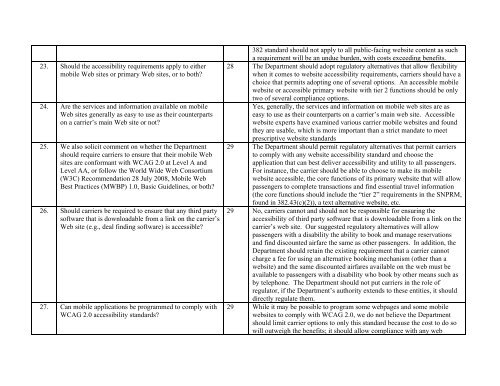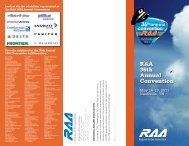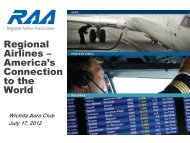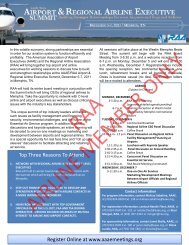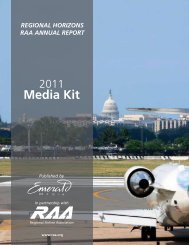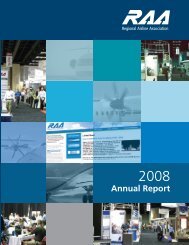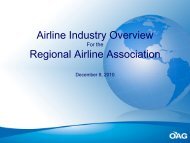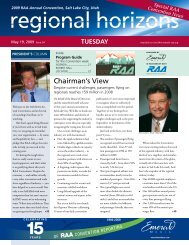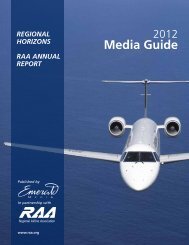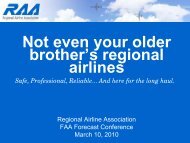Comments - Regional Airline Association
Comments - Regional Airline Association
Comments - Regional Airline Association
Create successful ePaper yourself
Turn your PDF publications into a flip-book with our unique Google optimized e-Paper software.
23. Should the accessibility requirements apply to eithermobile Web sites or primary Web sites, or to both?24. Are the services and information available on mobileWeb sites generally as easy to use as their counterpartson a carrier’s main Web site or not?25. We also solicit comment on whether the Departmentshould require carriers to ensure that their mobile Websites are conformant with WCAG 2.0 at Level A andLevel AA, or follow the World Wide Web Consortium(W3C) Recommendation 28 July 2008, Mobile WebBest Practices (MWBP) 1.0, Basic Guidelines, or both?26. Should carriers be required to ensure that any third partysoftware that is downloadable from a link on the carrier’sWeb site (e.g., deal finding software) is accessible?27. Can mobile applications be programmed to comply withWCAG 2.0 accessibility standards?382 standard should not apply to all public-facing website content as sucha requirement will be an undue burden, with costs exceeding benefits.28 The Department should adopt regulatory alternatives that allow flexibilitywhen it comes to website accessibility requirements, carriers should have achoice that permits adopting one of several options. An accessible mobilewebsite or accessible primary website with tier 2 functions should be onlytwo of several compliance options.Yes, generally, the services and information on mobile web sites are aseasy to use as their counterparts on a carrier’s main web site. Accessiblewebsite experts have examined various carrier mobile websites and foundthey are usable, which is more important than a strict mandate to meetprescriptive website standards29 The Department should permit regulatory alternatives that permit carriersto comply with any website accessibility standard and choose theapplication that can best deliver accessibility and utility to all passengers.For instance, the carrier should be able to choose to make its mobilewebsite accessible, the core functions of its primary website that will allowpassengers to complete transactions and find essential travel information(the core functions should include the “tier 2” requirements in the SNPRM,found in 382.43(c)(2)), a text alternative website, etc.29 No, carriers cannot and should not be responsible for ensuring theaccessibility of third party software that is downloadable from a link on thecarrier’s web site. Our suggested regulatory alternatives will allowpassengers with a disability the ability to book and manage reservationsand find discounted airfare the same as other passengers. In addition, theDepartment should retain the existing requirement that a carrier cannotcharge a fee for using an alternative booking mechanism (other than awebsite) and the same discounted airfares available on the web must beavailable to passengers with a disability who book by other means such asby telephone. The Department should not put carriers in the role ofregulator, if the Department’s authority extends to these entities, it shoulddirectly regulate them.29 While it may be possible to program some webpages and some mobilewebsites to comply with WCAG 2.0, we do not believe the Departmentshould limit carrier options to only this standard because the cost to do sowill outweigh the benefits; it should allow compliance with any web


